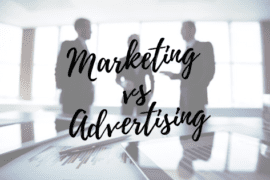Channel Marketing is the source of marketing that is commonly used by successful companies to communicate and connect with their customers. Mediums through which organizations perform channel marketing are called marketing channels, duh. A marketing channel refuses to be of a single type. It could be a set of people, activities, or it could be a small-scale organization that comes in handy to spread awareness about the products it is dealing with.
Types of Marketing Channels
As mentioned earlier, marketing channels differ considering their working complexity. Let’s see some types of marketing channels:
1. Manufacturer to Consumer
The most common type of marketing channel. In the said setup, the produced goods are directly transferred from the manufacturer to the consumers. According to popular belief, this marketing channel is extremely cost-effective considering no additive shenanigans. Furthermore, due to no third-party involvement, both the involved parties are free from any unnecessary hassles. Third-parties might include wholesalers, middlemen, and retailers that prefer charging certain amounts of commission. This results in an increase in the actual price of the products.
Example: Small-scale bakeries and eateries that deal with their customers directly or provide the service of dedicated home delivery of their products.
2. Manufacturer to Retailer to Consumer
Considering the precedence order, this marketing channel tops the list as the most adopted channel in the production industry. Retailers tend to contact various manufacturers to get hold of their goods. These goods include shoes, furniture, fashion apparels, etc.
Example: International retailers tend to have dedicated contacts with Chinese furniture manufacturers which allows the retailers to showcase and sell the pieces of furniture. The retailers buy goods from furniture manufacturers and after including a sufficient amount of commission, sell them to their customers.
3. Manufacturer to Wholesaler to Consumer
In terms of bulk sell/purchase business arrangements, this type of channel holds the highest precedence. The reason is that wholesalers tend to set lower commission rates as compared to retailers. However, they have a condition of dealing in bulk quantities to level up their low commission policy. So as an end result, the commission rates keep on decreasing with increase in the bulk quantity.
Example: Factory outlets sign up agreements with consumers to deal with bulk quantity purchases to entertain them with products at cheaper rates.
4. Manufacturer to Agent to Wholesaler to Retailer to Consumer
The most expensive channel in the industry. As the name suggests, it involves a minimum of three middlemen for the good to reach to the consumers. Due to this relaying connection, the original price gets stacked up by excessive commission rates, which are totally justified by the mediators. However, this results in an increase in the product’s actual price.
Example: These connections come in handy when the goods need to be transported at relatively faster speeds. So if you prioritize speedy access of goods, you have to compromise over the overall pricing.
To find out more about why channel marketing is important for your business, have a look at Forbes‘ say on channel marketing:
Why Distributing Content Through Multiple Channels Is Key To Dominating Your Market






